University Mini-Project MCE226L: Mittag-Leffler Function in C
VerifiedAdded on 2022/11/13
|8
|544
|433
Project
AI Summary
This mini-project, designed for MCE226L, focuses on the Mittag-Leffler function, a special function used in various engineering applications. The project involves developing a C program to calculate the Mittag-Leffler function for a user-defined range of input values. The program utilizes the Gamma function and approximates the infinite sum of the Mittag-Leffler function by iterating until the difference between successive terms is less than a specified tolerance. The code prompts the user to input the starting and ending values of the range, increment, and the parameters alpha and beta. The program then calculates and prints the values of the Mittag-Leffler function for each value within the specified range, providing a practical application of numerical methods and programming skills. The solution includes the C program code, a flowchart of the algorithm, and a sample output demonstrating the program's functionality.
1 out of 8

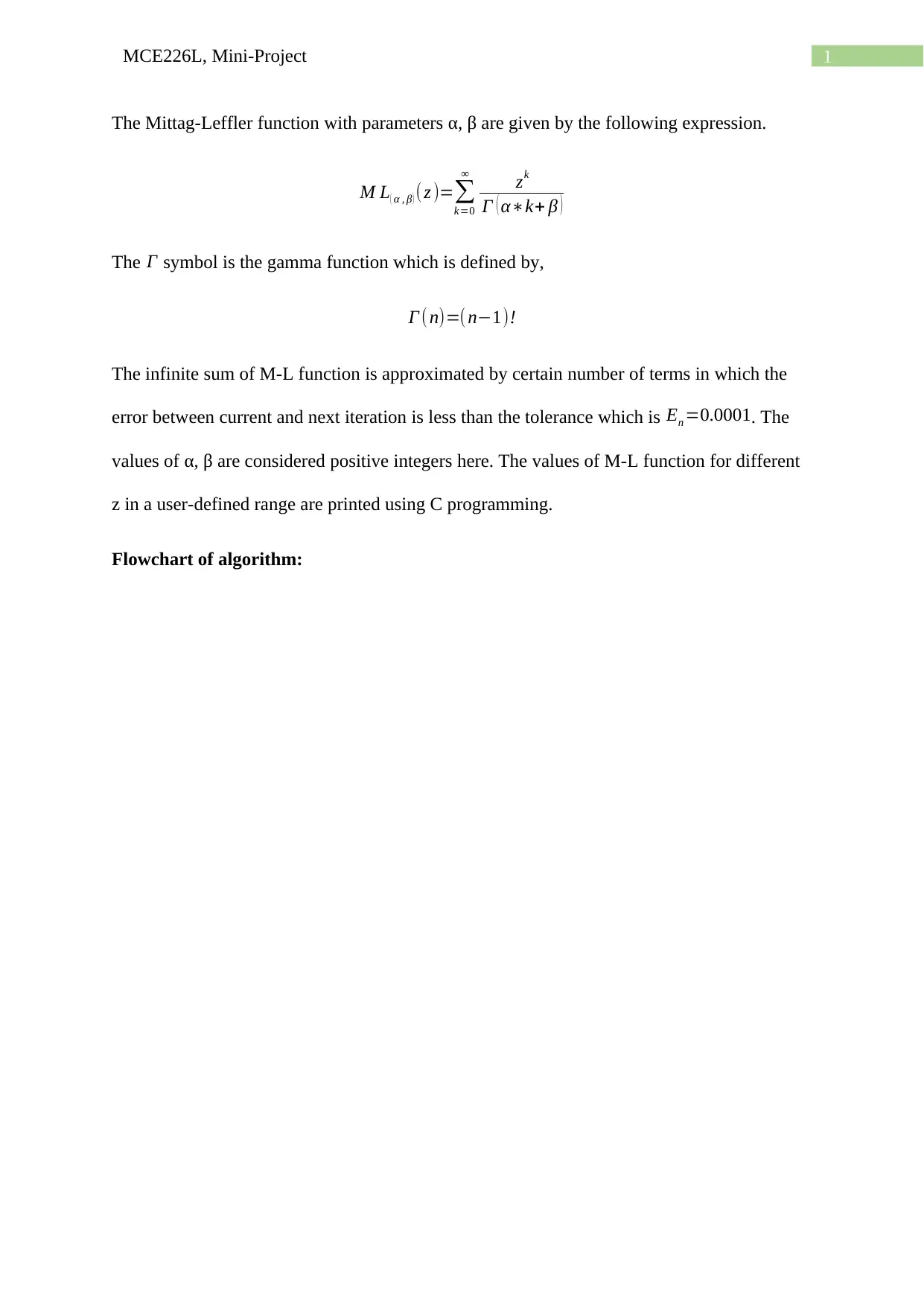
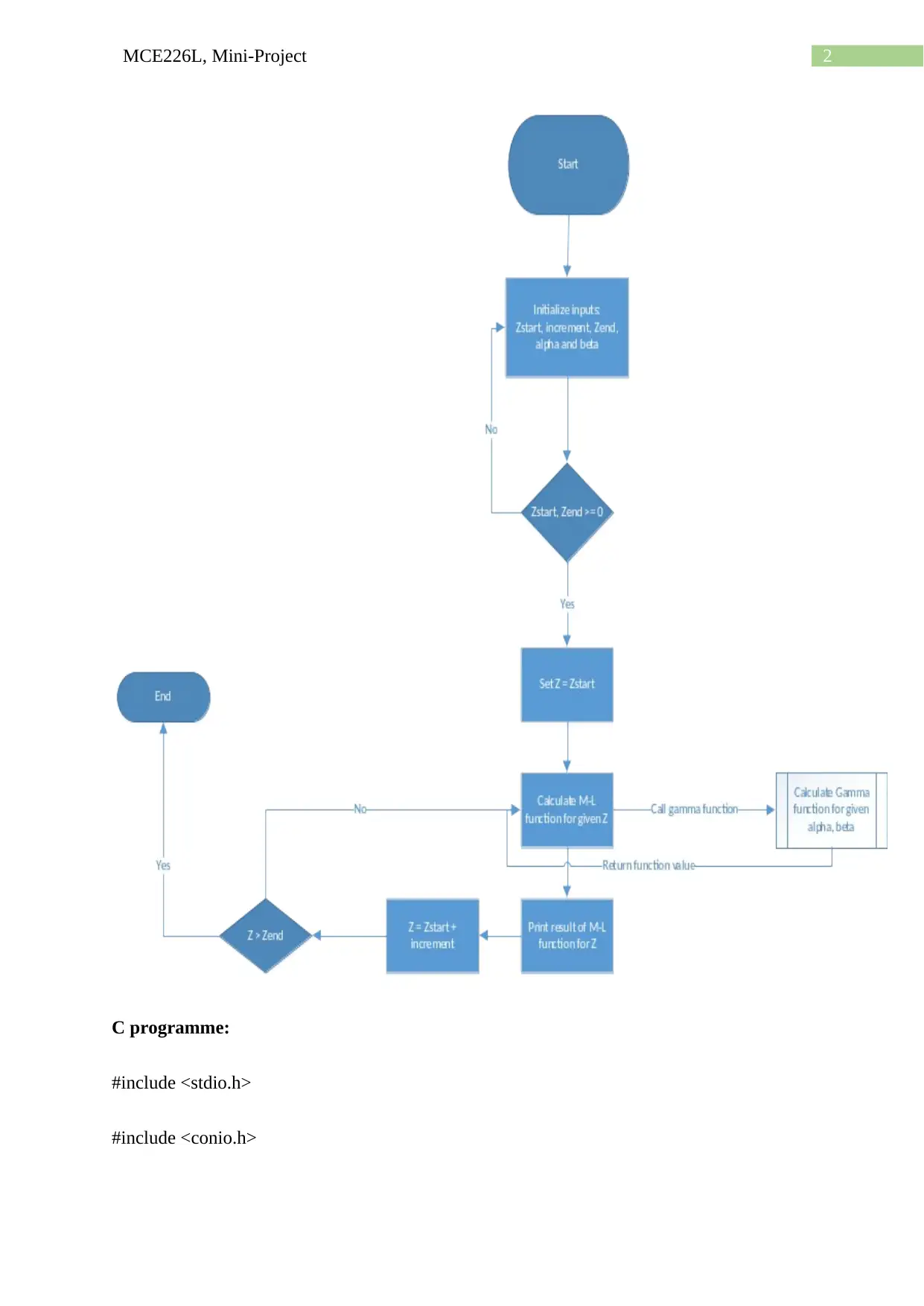

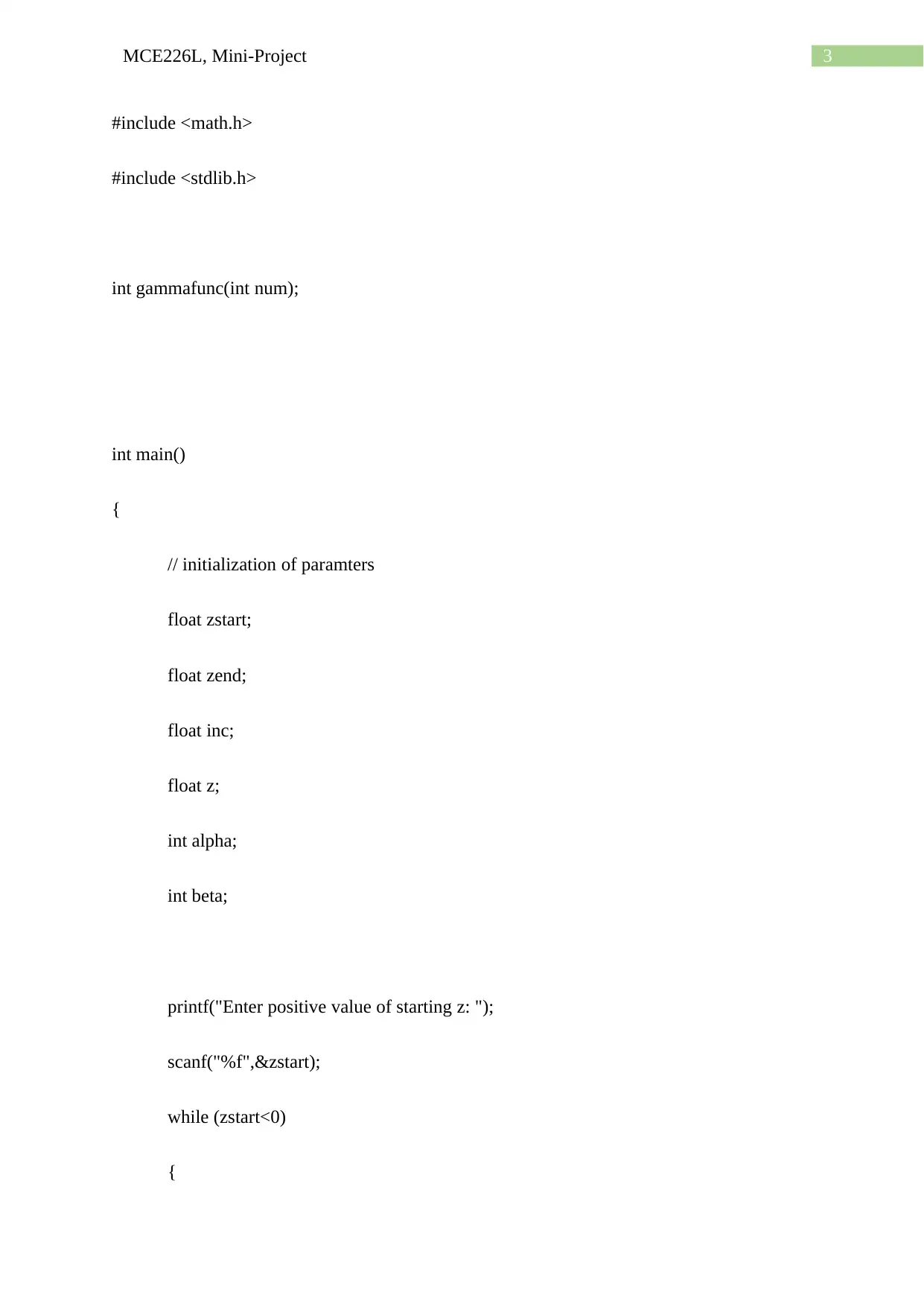
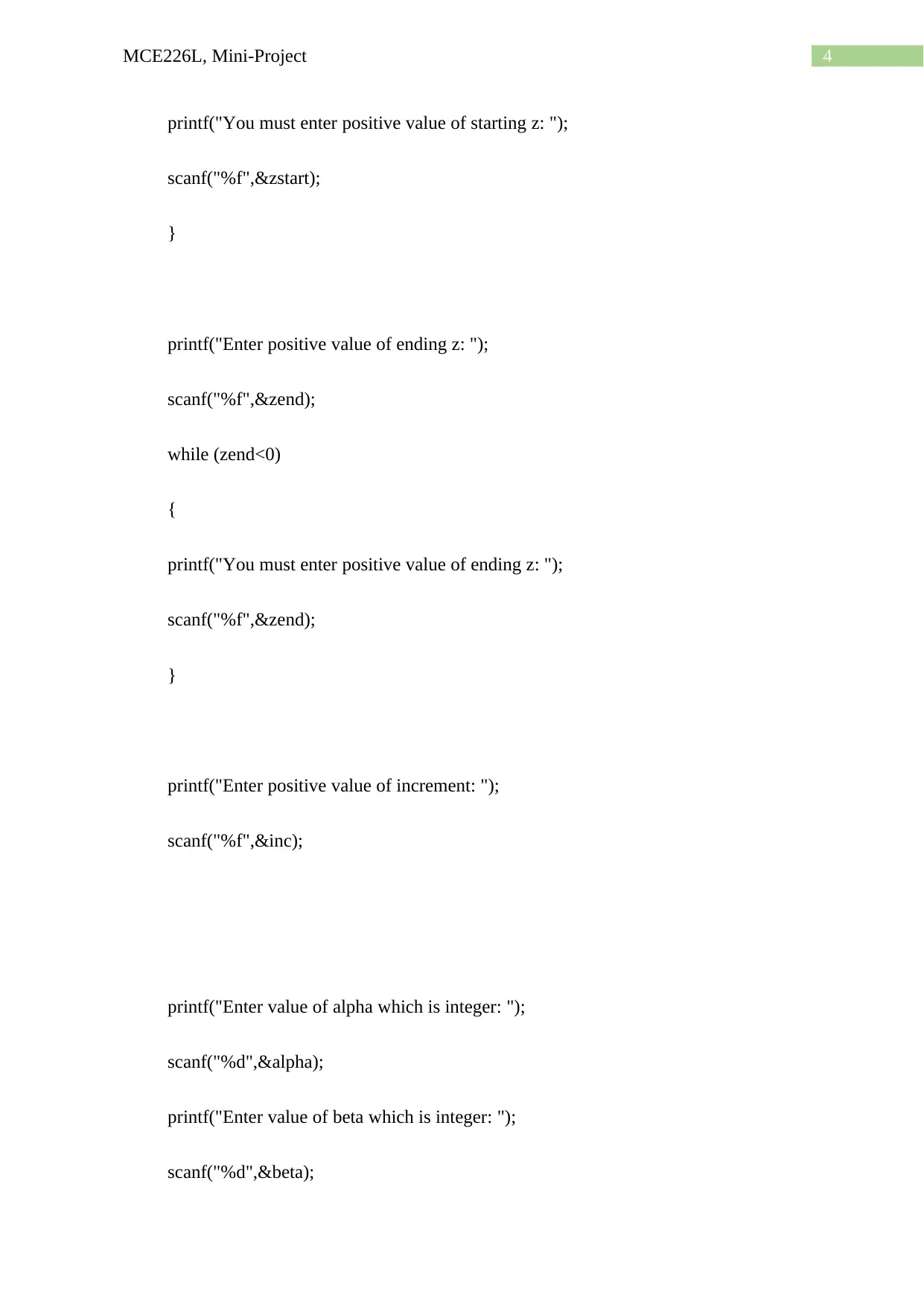
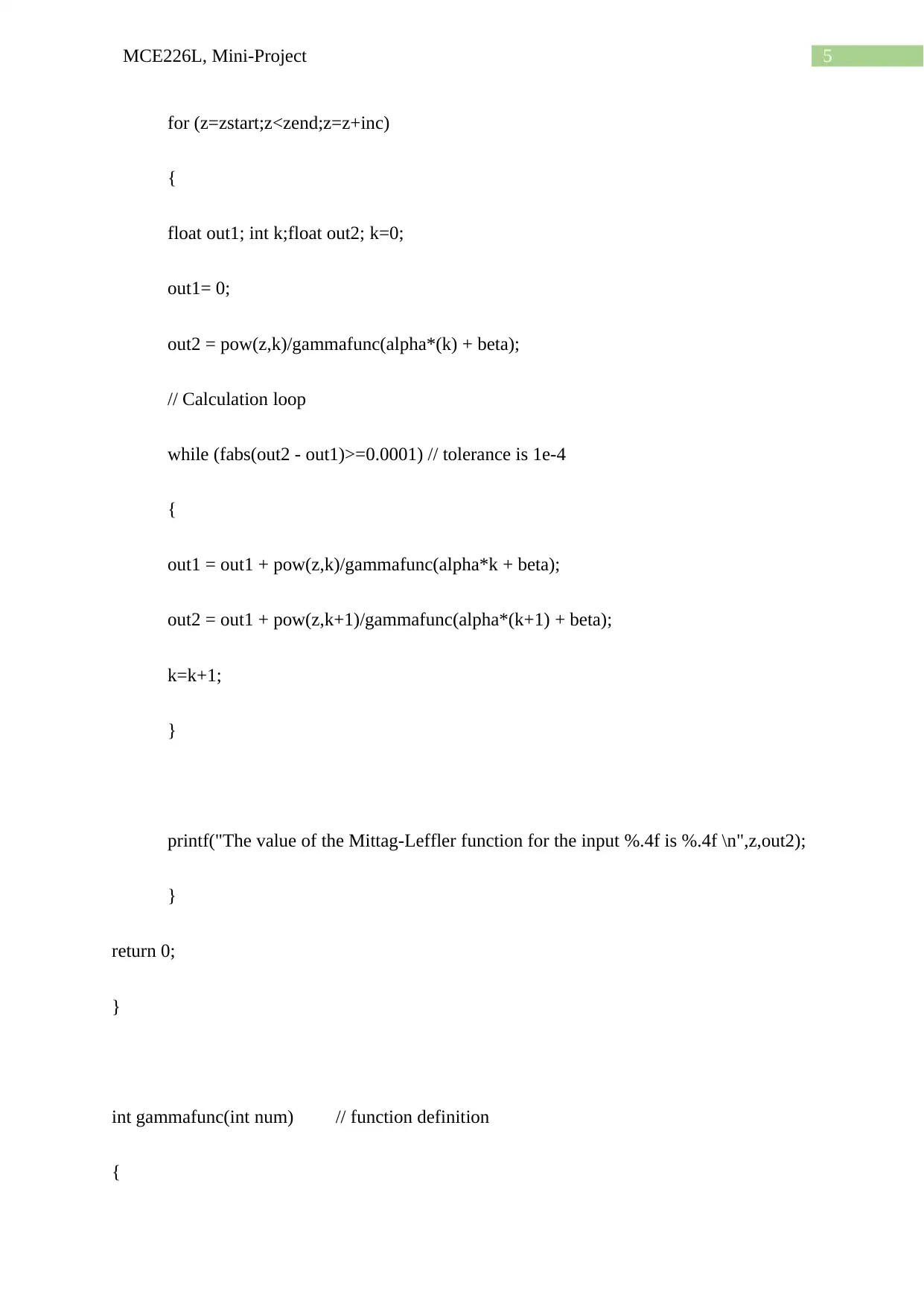
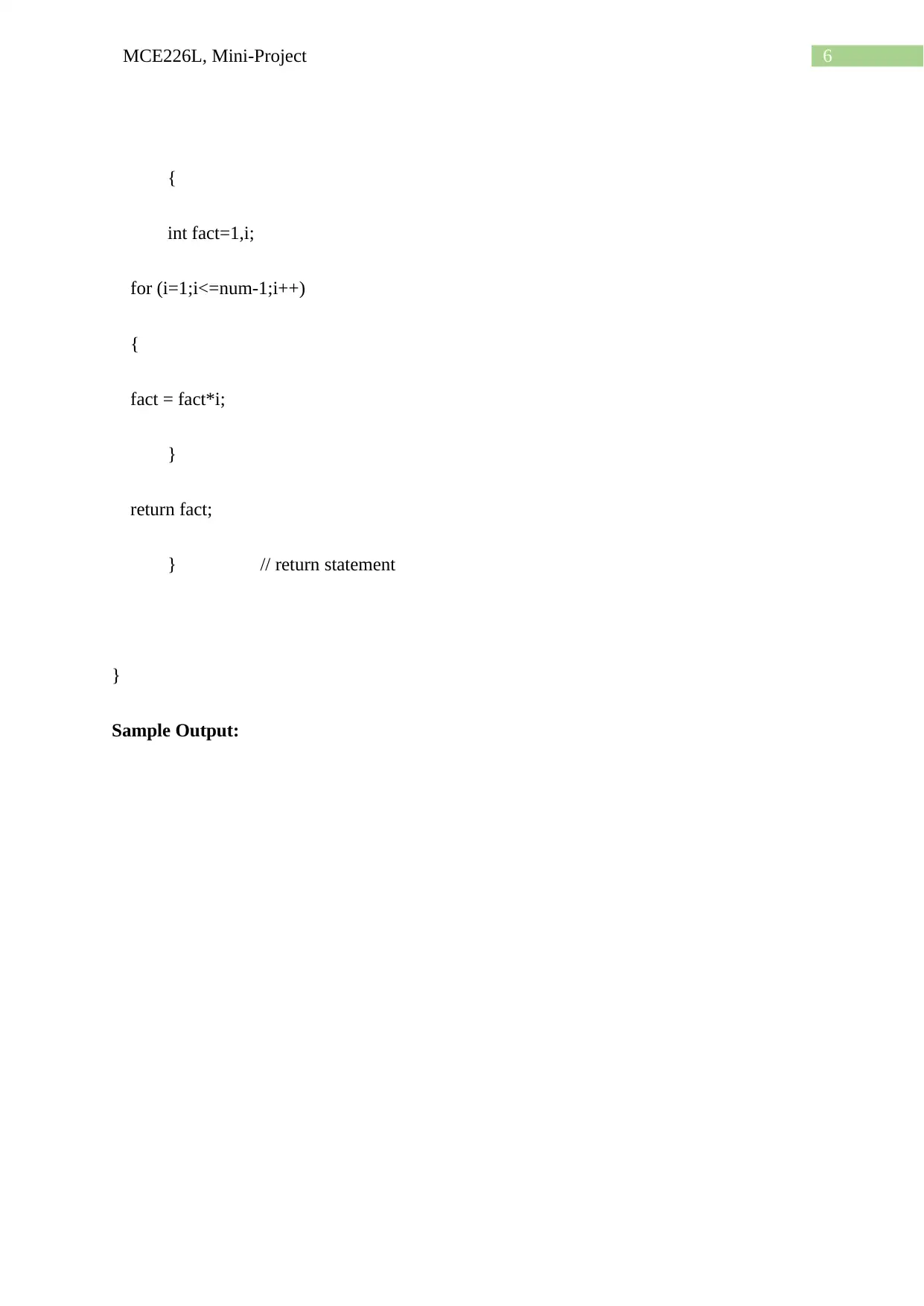
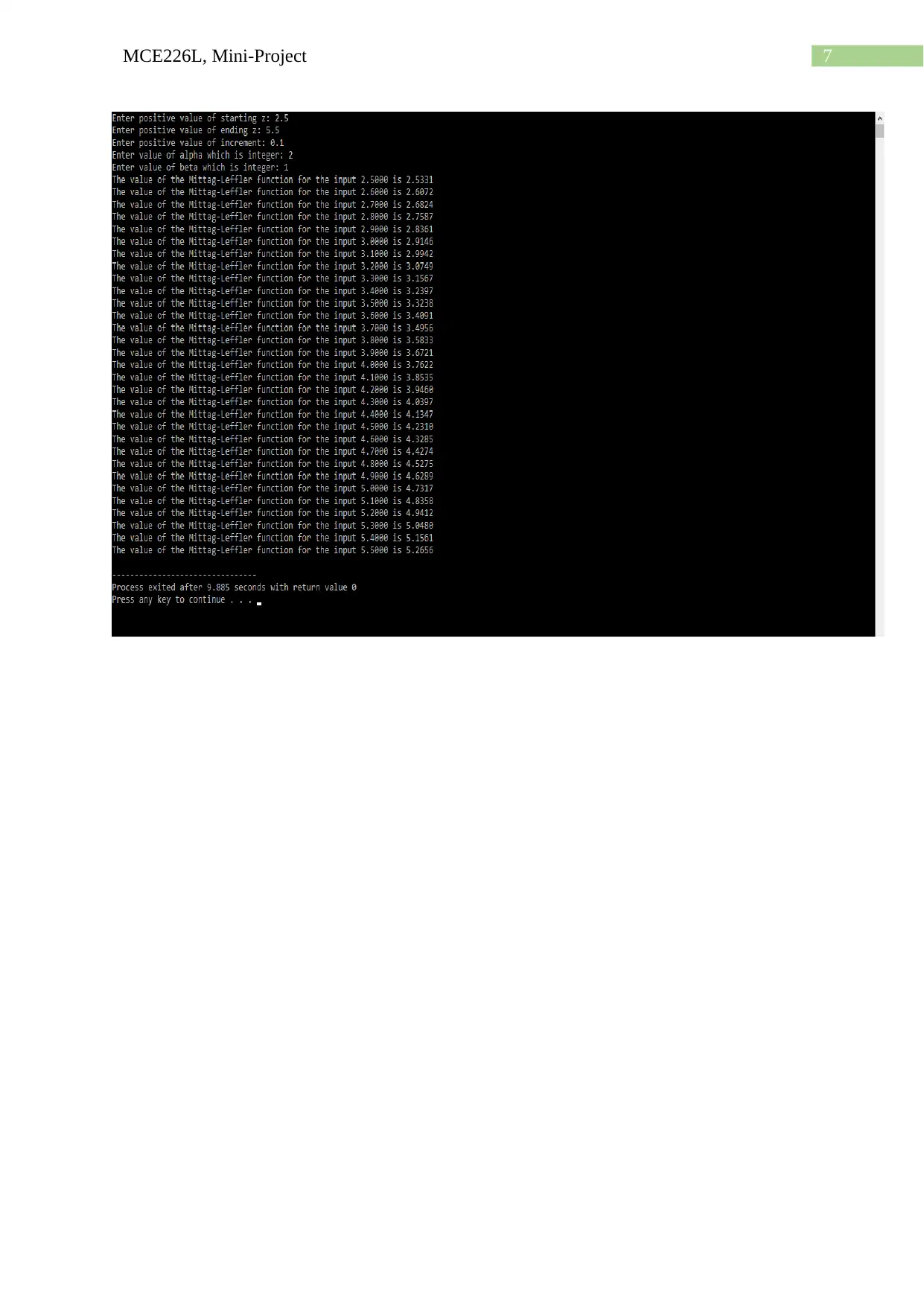
![[object Object]](/_next/static/media/star-bottom.7253800d.svg)